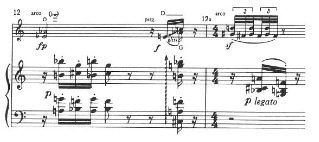There didn’t used to be any.
Schoenberg was an early numberer of every bar. But, in some manuscripts, no number 13 (12, 12a, 14…)!
New notated music became so particular that it needed to be possible easily to scrutinize it beginning at any measure, in rehearsal.
Old music that was part of the canon got measure numbers as it was republished, after 1900. (Nineteenth-century collected works editions didn’t yet include this modernism of bar numbering.)
Older scores have rehearsal letters, often positioned at conspicuous junctions within a piece. Today those letters still may be included in scores in the interest of cross-platform rehearsal necessity.
Letters must have been specific enough for the rehearsing of orchestra and chamber music in earlier times.
Measures within a “second ending” don’t receive bar-numbers of their own. Except occasionally they do.
A partial bar at the beginning of a piece doesn’t get it’s own number. But occasionally it does.
Measure numbering was a step in, or evidence of, the imposing of a grid…


And the numbering of lines in poetry…?